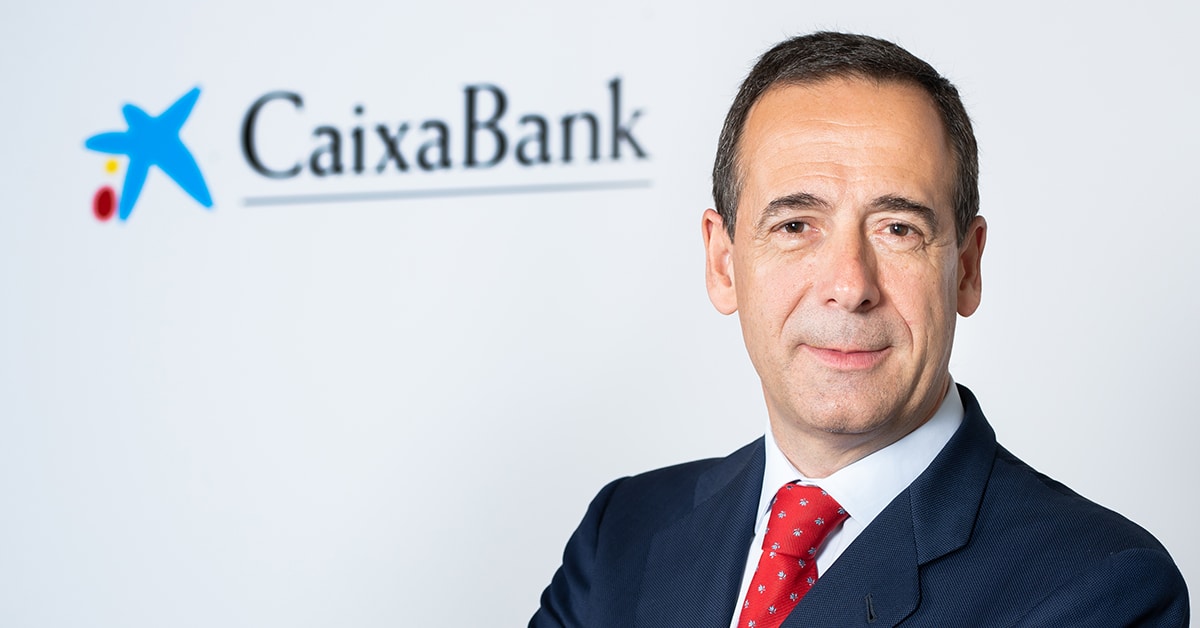CaixaBank CEO Gonzalo Gortázar explains how innovation is helping banks plan for future financial needs.

Global Finance: What can you share about data migration following CaixaBank’s merger with Bankia?
Gonzalo Gortázar: CaixaBank has a strong track record of banking integration, but without a doubt, this has been the most complex technological integration that we have executed to date. The migration involved 10.4 petabytes of information—the equivalent of 45 times the storage capacity on Spotify—and the deployment of an IT system capable of managing up to 29,000 transactions per second.
Three elements were critical to our success. The first one was preparation. No matter how much experience one has, preparation is essential to overcoming any obstacles that such a project may throw your way.
The second is a recurrent investment in technology and development that has generated a wealth of cumulative functional knowledge. Since its inception, CaixaBank has been a pioneer in using new technologies, such as the first ATMs in Spain, contactless technology and, more recently, facial-recognition ATMs. This legacy has undoubtedly been instrumental in helping us to implement our technology integration best.
The third and critical element to our success has been our dedicated, talented and committed team. The whole organization, and our IT team, worked tirelessly in the months running up to the integration so that everything could go smoothly. As a result, we completed the IT integration in less than a weekend, four hours ahead of the planned deadline. I can’t thank the team enough for their sterling efforts.
GF: Which technologies will make the most significant impact on banking within the next few years?
Gortázar: At CaixaBank, we believe that technological innovation doesn’t have to be a goal. It only makes sense if it is used to benefit clients and employees. Many new technologies will change banking as we see it today, such as the cloud, biometrics, big data analysis, artificial intelligence [AI], machine learning and even quantum computing, all of which will allow transactions to happen at a speed that is unimaginable today.
CaixaBank is an early adopter of many of these technologies and had many successful rollouts. The cloud is one area that will bring significant benefits to the sector. With this in mind, we are working to evolve our technological infrastructure, preparing it for the public cloud, and making it faster and more efficient. We are also placing great efforts into boosting data analysis and AI capabilities to rethink processes and improve our skills and client experience.
GF: What is driving the growth in bancasurance and how is this helping expand relationships with customers?
Gortázar: CaixaBank combines a bancassurance model, which combines banking and insurance, with a unique omnichannel distribution platform and multiproduct capabilities. Three factors power this model. First, there is the ownership of the “product factories,” such as CaixaBank Asset Management, VidaCaixa or CaixaBank Payments and Consumer, especially in the long-term savings products like mutual funds, pension plans and unit-linked insurance plans. Secondly, an advisory model for clients and families with experienced and trained advisors looking out for their clients’ best interests; and finally, the largest branch network in our country and the highest penetration in digital home banking, which allows us to stay close to our clients regardless of how, when and where they want to interact with their bank. All these factors give us the flexibility to continuously adapt to our clients’ needs, becoming a commercial and product trendsetter and continually reinforcing our leadership.
GF: Should banks drive sustainability?
Gortázar: Impact investing and, in a broader sense, sustainability has raised the economic and political agenda, and banks, which facilitate the flow of capital to families and businesses, can play a crucial role in the growth of sustainability. Indeed, regulations are increasingly incentivizing better practices, but at CaixaBank, we want to lead in this transition. To this end, in 2021, we created our sustainability business area with a chief sustainability officer who is part of the management committee, highlighting the importance of this topic throughout the bank’s value chain.
In 2021, we saw record sustainable finance transactions through green, social and sustainable loans, but also through the issuance of ESG-linked bonds, where CaixaBank is the leader in the euro market with more than €8 billion [$8.6 billion] issued.
Regarding the social factor, I am proud to say that we own the biggest microlending bank in Europe, MicroBank, which has granted more than 1.1 million microcredits for a total of more than €7 billion since its 2007 inception.



